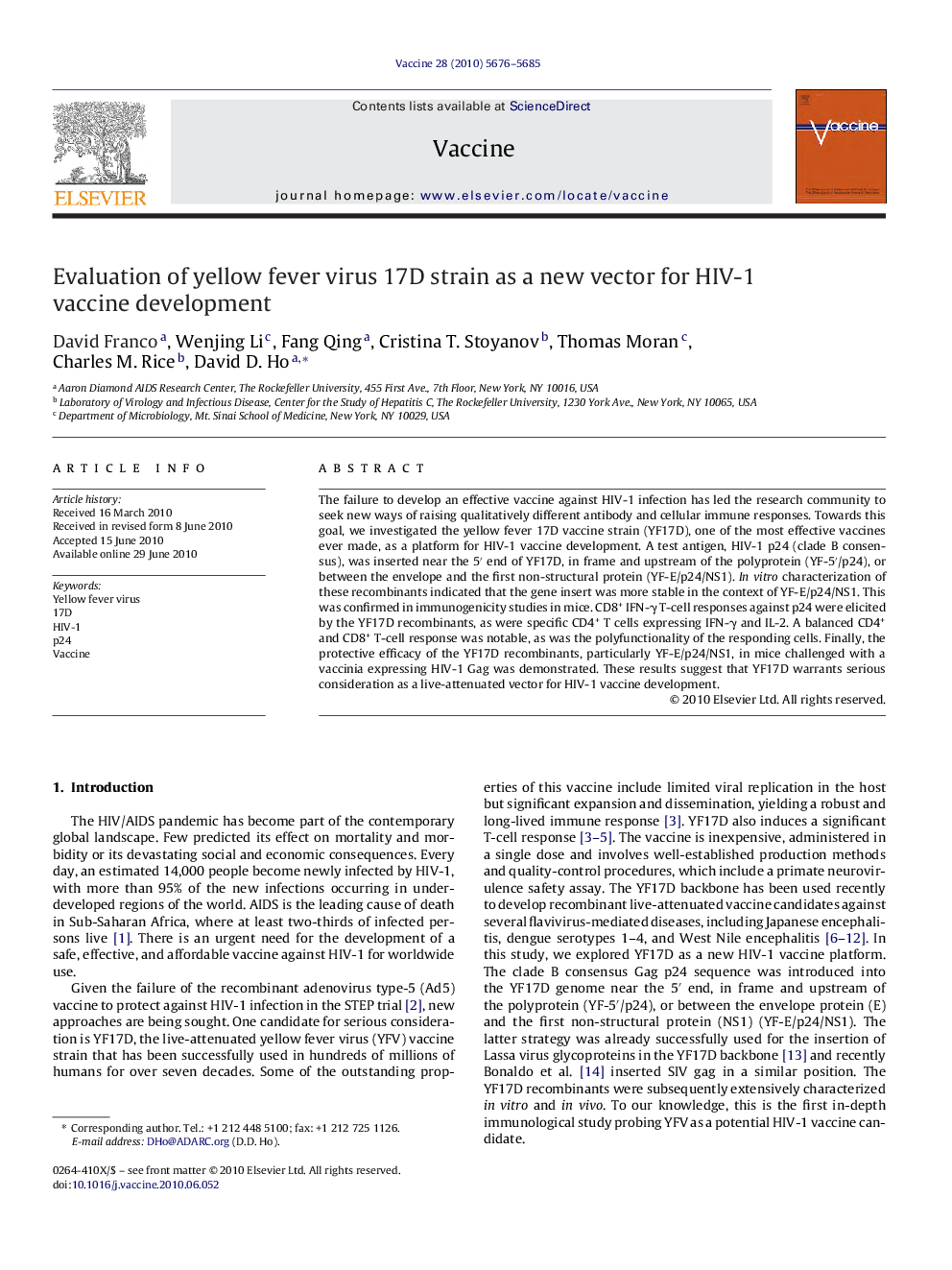| Article ID | Journal | Published Year | Pages | File Type |
|---|---|---|---|---|
| 10969560 | Vaccine | 2010 | 10 Pages |
Abstract
The failure to develop an effective vaccine against HIV-1 infection has led the research community to seek new ways of raising qualitatively different antibody and cellular immune responses. Towards this goal, we investigated the yellow fever 17D vaccine strain (YF17D), one of the most effective vaccines ever made, as a platform for HIV-1 vaccine development. A test antigen, HIV-1 p24 (clade B consensus), was inserted near the 5â² end of YF17D, in frame and upstream of the polyprotein (YF-5â²/p24), or between the envelope and the first non-structural protein (YF-E/p24/NS1). In vitro characterization of these recombinants indicated that the gene insert was more stable in the context of YF-E/p24/NS1. This was confirmed in immunogenicity studies in mice. CD8+ IFN-γ T-cell responses against p24 were elicited by the YF17D recombinants, as were specific CD4+ T cells expressing IFN-γ and IL-2. A balanced CD4+ and CD8+ T-cell response was notable, as was the polyfunctionality of the responding cells. Finally, the protective efficacy of the YF17D recombinants, particularly YF-E/p24/NS1, in mice challenged with a vaccinia expressing HIV-1 Gag was demonstrated. These results suggest that YF17D warrants serious consideration as a live-attenuated vector for HIV-1 vaccine development.
Keywords
Related Topics
Life Sciences
Immunology and Microbiology
Immunology
Authors
David Franco, Wenjing Li, Fang Qing, Cristina T. Stoyanov, Thomas Moran, Charles M. Rice, David D. Ho,
